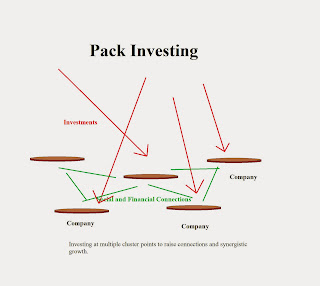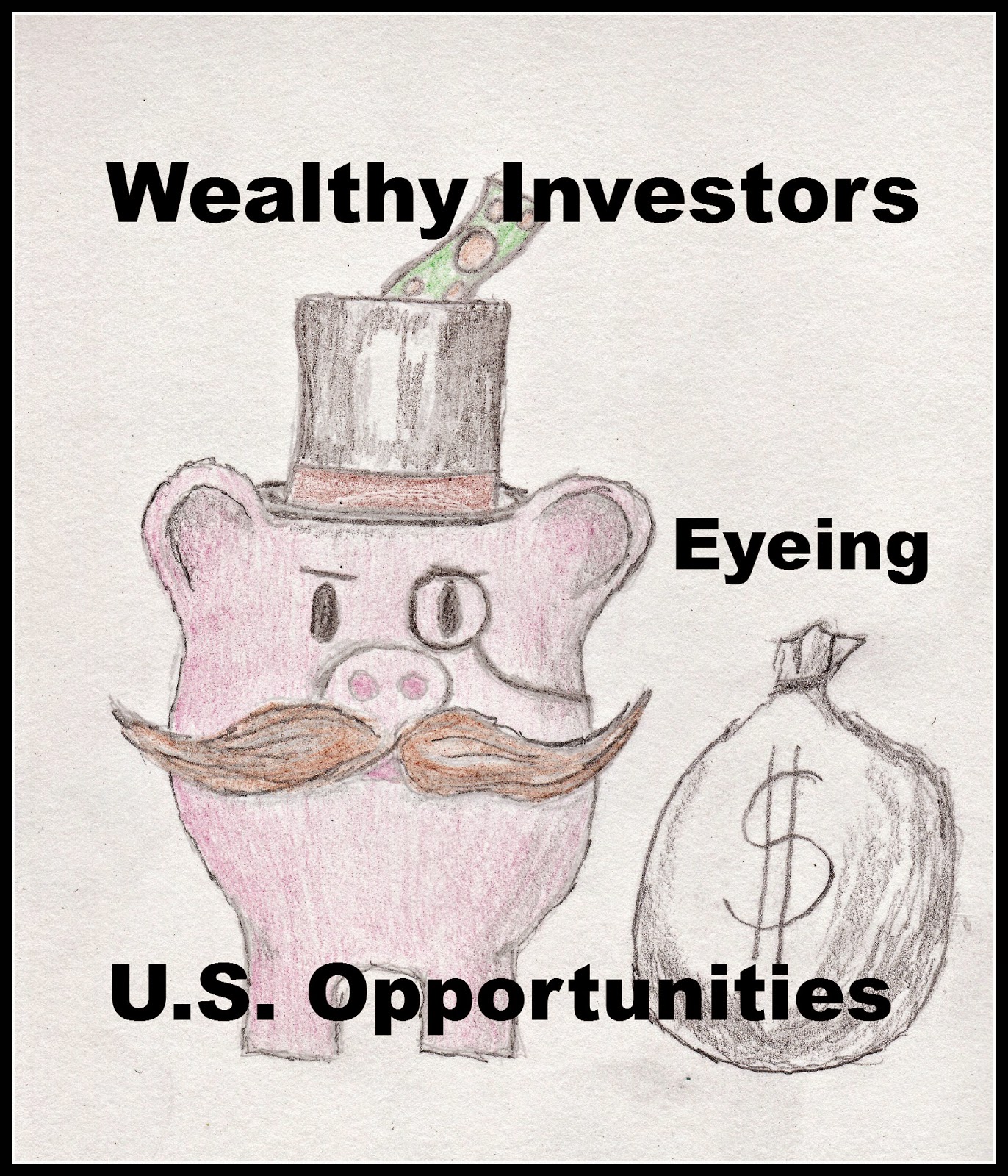Group investment
is not a novel
idea
but
can be significant
in developing
stronger
local
growth
models.
A “hot”
market
is one that draws
substantial
investment
interest
that encourages
growth
among market
relevant
businesses.
Pack investing
offers
opportunities
to create
multiple
points
of capital
infusion
that lead
to the growth
of a battery
of related
companies.
Companies do not work in a vacuum and rely on different local stakeholders to feed the building of their business. They need resources, human capital, science, facilities, suppliers, partners, and customers to develop momentum. If they lack the right environment, their business is doomed to failure before it gets started.
Pack investing offers the opportunity to take a local core competency with a solid industry base and infuse large amounts of capital at various points to encourage mutual growth. Multiple investors may work together to invest in complementary businesses that have market relevance but are not operating at peak performance.
The potential for quick growth and higher market returns is greater for companies that work together. Network relationships and alliance capitalism can create higher growth records among businesses (Eng, 2007). Sharing resources and knowledge during the growth stages with peer companies seems to make a difference.
Pack investing, and allied companies develop a stronger competitive stance. Industry alliances, even when money is not transferring between them, earned abnormally high local returns (Wang & Der-Jin, 2005). Getting businesses to support each other’s growth trajectories with shared services lead to stronger intra-firm alliances.
Collaborating on an investment level and working on a firm level creates two forms of potential synergy. Infusion of cash allows individual companies to expand their operations. Sharing knowledge and resources with other businesses helps them learn and adapt. Together investment and development create clusters of competitive firms that lead to jobs and economic wealth.
Investing in a pack and encouraging mutual growth is different than standard competitive strategies and requires a new way of thinking. Competitiveness is in the American blood, but collaboration can sometimes supersede this instinct to create greater value. Persuading investing institutions and company CEO’s to work together is a challenging game.
Pack investing relies on transparent city data that allows investors to find underperforming clusters and explore them. Seeing the opportunities and sharing those opportunities with like-minded investors may be against culture but can be lucrative, in the long run, when investment returns rises. Greater revenue is followed by new investment, tax income and jobs that can raise living standards of residents.
Eng, T. (2007). Relationship value of firms in alliance capitalism and implications for FDI. International Journal of Business Studies, 15 (1).
Wang, Y. & Der-Jin, M. (2005). Using strategic alliances to make decisions about investing in technological innovations. International Journal of Management, 22 (4).
Companies do not work in a vacuum and rely on different local stakeholders to feed the building of their business. They need resources, human capital, science, facilities, suppliers, partners, and customers to develop momentum. If they lack the right environment, their business is doomed to failure before it gets started.
Pack investing offers the opportunity to take a local core competency with a solid industry base and infuse large amounts of capital at various points to encourage mutual growth. Multiple investors may work together to invest in complementary businesses that have market relevance but are not operating at peak performance.
The potential for quick growth and higher market returns is greater for companies that work together. Network relationships and alliance capitalism can create higher growth records among businesses (Eng, 2007). Sharing resources and knowledge during the growth stages with peer companies seems to make a difference.
Pack investing, and allied companies develop a stronger competitive stance. Industry alliances, even when money is not transferring between them, earned abnormally high local returns (Wang & Der-Jin, 2005). Getting businesses to support each other’s growth trajectories with shared services lead to stronger intra-firm alliances.
Collaborating on an investment level and working on a firm level creates two forms of potential synergy. Infusion of cash allows individual companies to expand their operations. Sharing knowledge and resources with other businesses helps them learn and adapt. Together investment and development create clusters of competitive firms that lead to jobs and economic wealth.
Investing in a pack and encouraging mutual growth is different than standard competitive strategies and requires a new way of thinking. Competitiveness is in the American blood, but collaboration can sometimes supersede this instinct to create greater value. Persuading investing institutions and company CEO’s to work together is a challenging game.
Pack investing relies on transparent city data that allows investors to find underperforming clusters and explore them. Seeing the opportunities and sharing those opportunities with like-minded investors may be against culture but can be lucrative, in the long run, when investment returns rises. Greater revenue is followed by new investment, tax income and jobs that can raise living standards of residents.
Eng, T. (2007). Relationship value of firms in alliance capitalism and implications for FDI. International Journal of Business Studies, 15 (1).
Wang, Y. & Der-Jin, M. (2005). Using strategic alliances to make decisions about investing in technological innovations. International Journal of Management, 22 (4).

